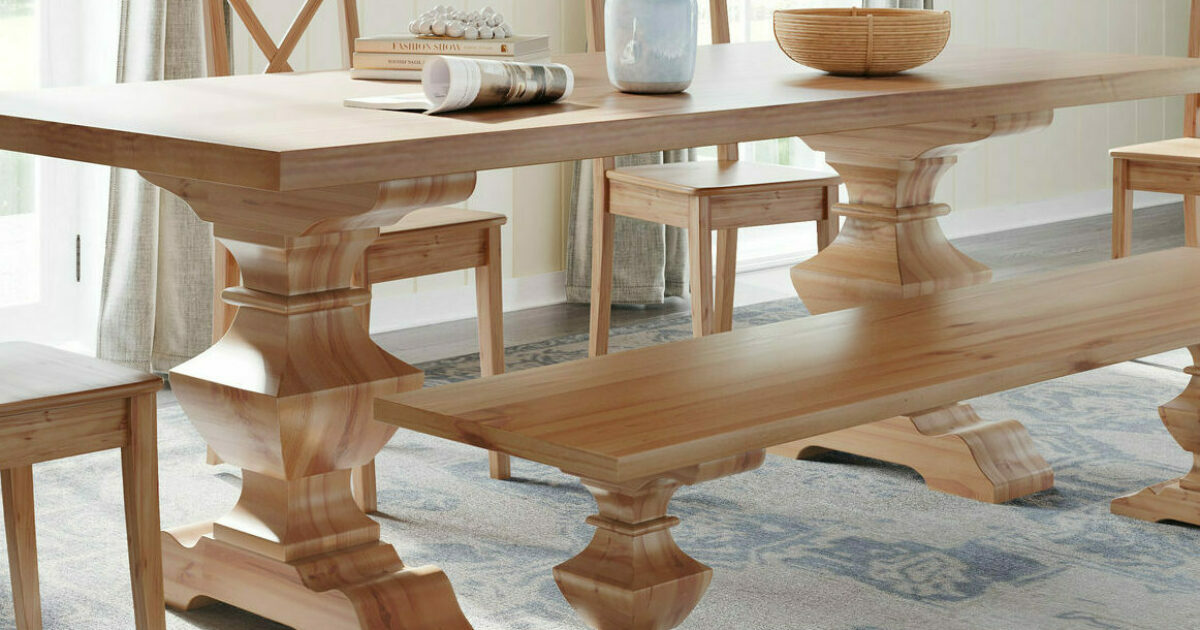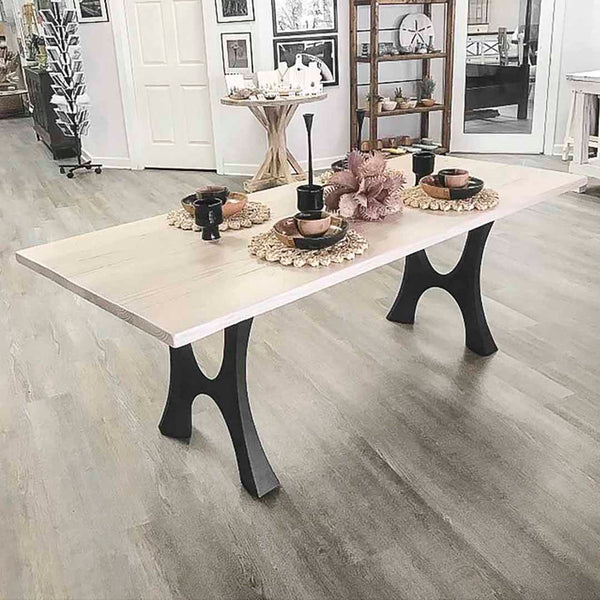Attain an Innovative Look with Premium Dining Table Legs Wood Options
Attain an Innovative Look with Premium Dining Table Legs Wood Options
Blog Article
Checking Out the Various Kinds of Table Legs Timber for Your Eating Space
The choice of eating table legs timber can greatly impact both the visual and useful high qualities of your eating area. Solid timber options, such as oak and walnut, provide a timeless look with unmatched longevity, while engineered timber choices offer ingenious layouts that mimic the richness of all-natural grains. In addition, the growing pattern of recovered wood presents a sustainable component that allures to eco mindful customers. As we discover these various choices, it ends up being necessary to consider not only the visual allure but likewise the functional implications of each material selection. What elements should assist your decision?
Solid Wood Options

Unlike engineered materials, strong wood is much less prone to bending and damages over time when properly maintained. Each piece of strong timber is one-of-a-kind, showcasing individual qualities that add to the appeal and character of the dining table.
Furthermore, solid wood can be completed in countless ways, varying from natural oils to tarnished surfaces, permitting house owners to personalize their furniture to match their decor. In recap, selecting solid wood for eating table legs not only ensures structural honesty yet likewise boosts the aesthetic appeal of the eating area, making it a worthwhile financial investment for any kind of home.
Engineered Timber Alternatives

Plywood, constructed from numerous layers of timber veneer, is stable and specifically strong, making it a superb selection for eating table legs. Its split composition enables it to endure modifications in moisture and temperature level much better than conventional solid timber. MDF, on the various other hand, uses a smooth surface for paint or veneering, enabling designers to attain a sleek look while maintaining structural integrity.
Particleboard, often used in budget-friendly choices, offers good toughness and is lightweight, making it simpler to take care of. Nevertheless, it may not be as durable as plywood or MDF. It is crucial to think about the designated usage and preferred aesthetic when selecting crafted timber choices. These products not only enhance the capability of eating areas yet also enable greater style flexibility, guaranteeing that contemporary and conventional designs can coexist harmoniously.
Reclaimed Timber Features
Redeemed wood provides an unique blend of sustainability and character, making it an increasingly popular selection for dining table legs. Sourced from old barns, manufacturing facilities, and various other frameworks, reclaimed timber personifies a history that new products just can not duplicate. Each item brings its very own story, marked by distinct imperfections, knots, and differing grain patterns, which contribute to a table's distinct aesthetic appeal.
Along with its visual appeal, redeemed wood is an eco-friendly alternative. By repurposing previously made use of materials, it minimizes the need for new lumber, therefore aiding to preserve woodlands and minimize waste. This lines up with an expanding customer preference for lasting methods in furniture.
In addition, recovered wood is commonly more resilient than freshly harvested timber because Get More Information of its age. The all-natural drying out procedure that recovered wood undergoes cause a denser and stronger product, making it much less prone to warping and splitting. This enhances the durability of eating tables, enabling them to endure the roughness of day-to-day use.
Softwood vs. Hardwood
When picking eating table legs, understanding the differences between softwood and wood is vital for achieving both visual and functional objectives. They commonly exhibit a more rustic appearance, making them suitable for casual or country-style dining spaces.
On the various other hand, hardwoods, sourced from deciduous trees like cherry, oak, and maple, are renowned for their density, toughness, and toughness. Continue The intricate grain patterns and abundant tones of woods offer a timeless and advanced appeal, making them excellent click here for more for formal eating settings. While woods tend to be extra expensive and heavier, their resilience against damage typically justifies the financial investment.
Ultimately, the choice in between softwood and wood for dining table legs must align with your design vision, use requirements, and spending plan, ensuring that your eating room reflects your individual design while continuing to be practical over time.

Treatments and coatings
The visual appeal and durability of table legs can be considerably improved with various finishes and therapies. These procedures not just protect the wood from damage however also elevate its look, allowing it to complement diverse indoor styles.
One usual treatment is discoloring, which penetrates the timber and improves its natural grain while including shade. Spots provide an abundant, elegant look, enabling homeowners to match their furnishings with existing design. Alternatively, clear finishes such as polyurethane or varnish produce a safety layer without changing the timber's initial hue, guaranteeing longevity against damage.
Additionally, natural oils, like tung or linseed oil, nourish the wood and provide a subtle sheen, all while being environmentally friendly. These oils permit the surface to take a breath, stopping moisture build-up and potential bending.
For those looking for a rustic appeal, distressed or weathered surfaces can be applied to develop an aged appearance, adding personality to the item. Inevitably, the choice of surfaces and treatments depends upon individual preference, preferred aesthetics, and the specific timber kind, making it necessary to take into consideration these factors when selecting eating table legs for your room.
Final Thought
Solid woods, engineered options, and reclaimed options each offer distinctive advantages, providing to numerous preferences and needs. Ultimately, the selection of wood type should straighten with preferred style, durability, and ecological factors to consider, improving the overall dining experience.
The option of dining table legs wood can exceptionally impact both the aesthetic and useful high qualities of your dining space - Dining Table Legs Wood. Strong wood options, such as oak and walnut, offer a classic look with unparalleled toughness, while engineered wood options provide cutting-edge styles that mimic the splendor of natural grains. Solid timber supplies a classic top quality that can raise the general design of a dining room. Each item of strong wood is special, showcasing specific attributes that add to the beauty and personality of the dining table
Furthermore, redeemed wood is typically much more long lasting than freshly gathered timber due to its age.
Report this page